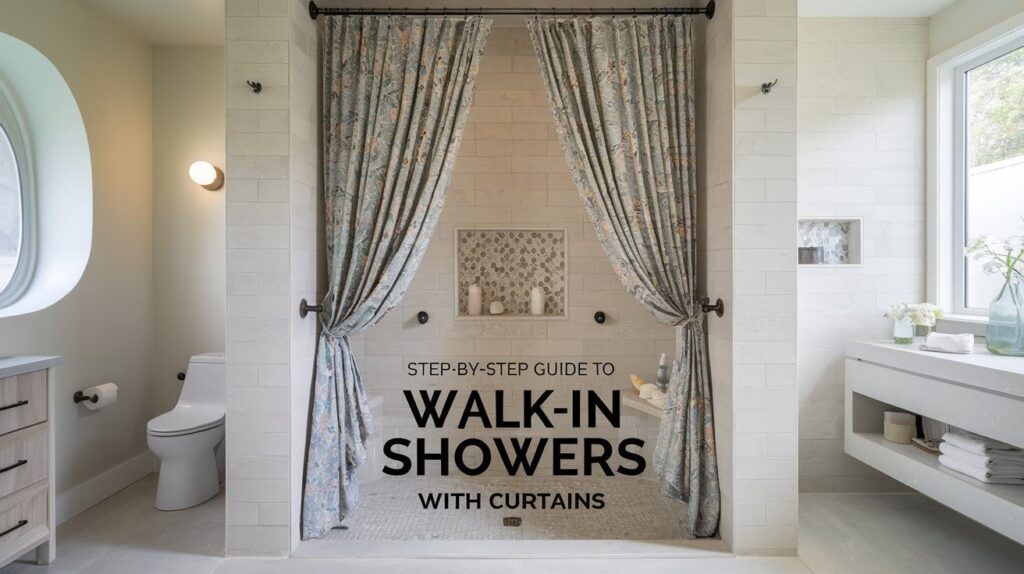After renovating countless bathrooms over the past decade, I’ve witnessed walk-in showers become the preferred choice for homeowners seeking both functionality and modern appeal.
While glass doors often dominate the conversation, I’ve found that curtains offer an equally compelling solution – one that’s budget-friendly, versatile, and surprisingly sophisticated when done right.
Through my experience working with clients, I’ve learned that the key lies in proper selection, correct installation techniques, and understanding maintenance requirements.
In this comprehensive guide, I’ll share the insights I’ve gained from real-world projects, walking you through each step of creating a walk-in shower with curtains that combines practicality with visual appeal while maximizing your bathroom’s potential.
Why Choose a Curtain for Your Walk-In Shower
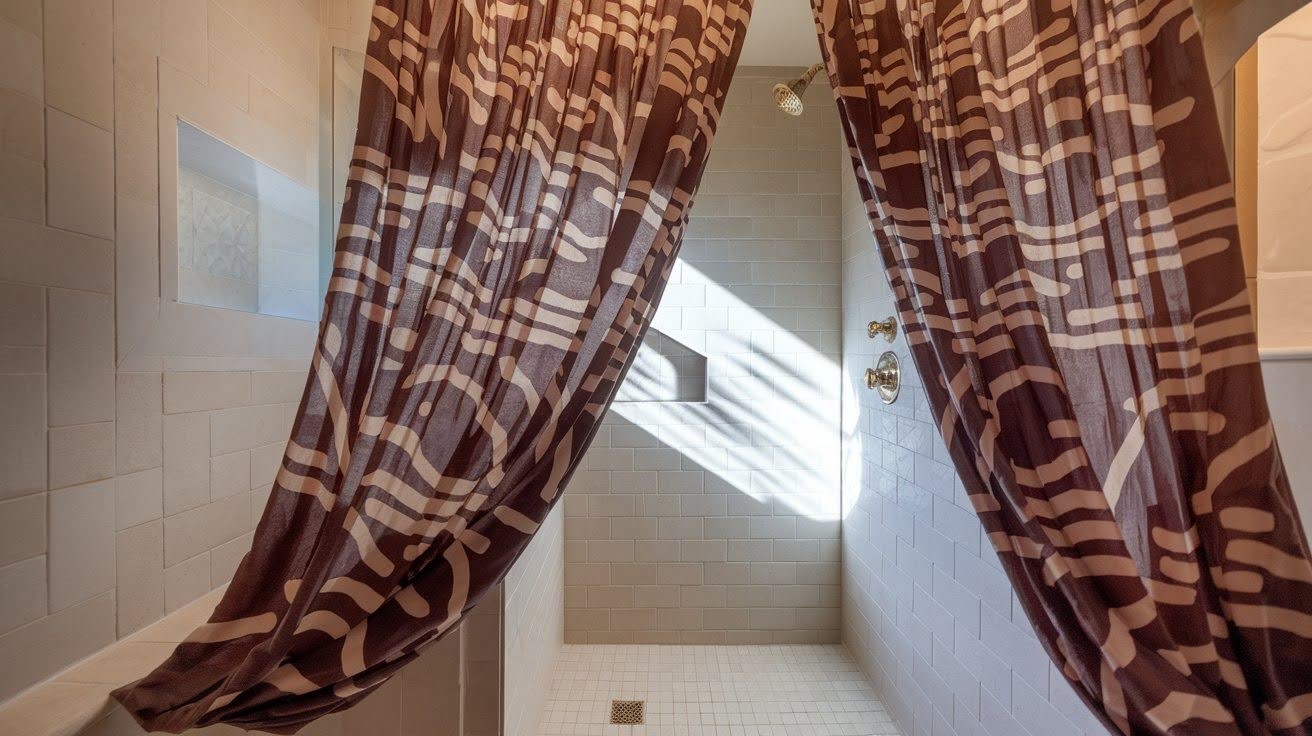
Having installed both glass doors and curtains in hundreds of walk-in showers, I can tell you that curtains often surprise my clients with their advantages. The most immediate benefit? Your wallet will thank you.
Quality shower curtains cost a fraction of what you’d spend on custom glass doors, leaving more room in your budget for other bathroom upgrades.
What wins people over is the incredible variety available. From bold patterns that make a statement to subtle textures that complement any décor, curtains let you change your bathroom’s personality whenever the mood strikes.
I’ve had clients who swap out their curtains seasonally, light, airy fabrics for summer and rich, cozy materials for winter.
No waiting weeks for glass repair, simply replace the curtain and you’re back in business. It’s practical home maintenance at its finest.
Guide to Walk-In Showers with Curtains
Step 1 – Select the Right Curtain and Liner
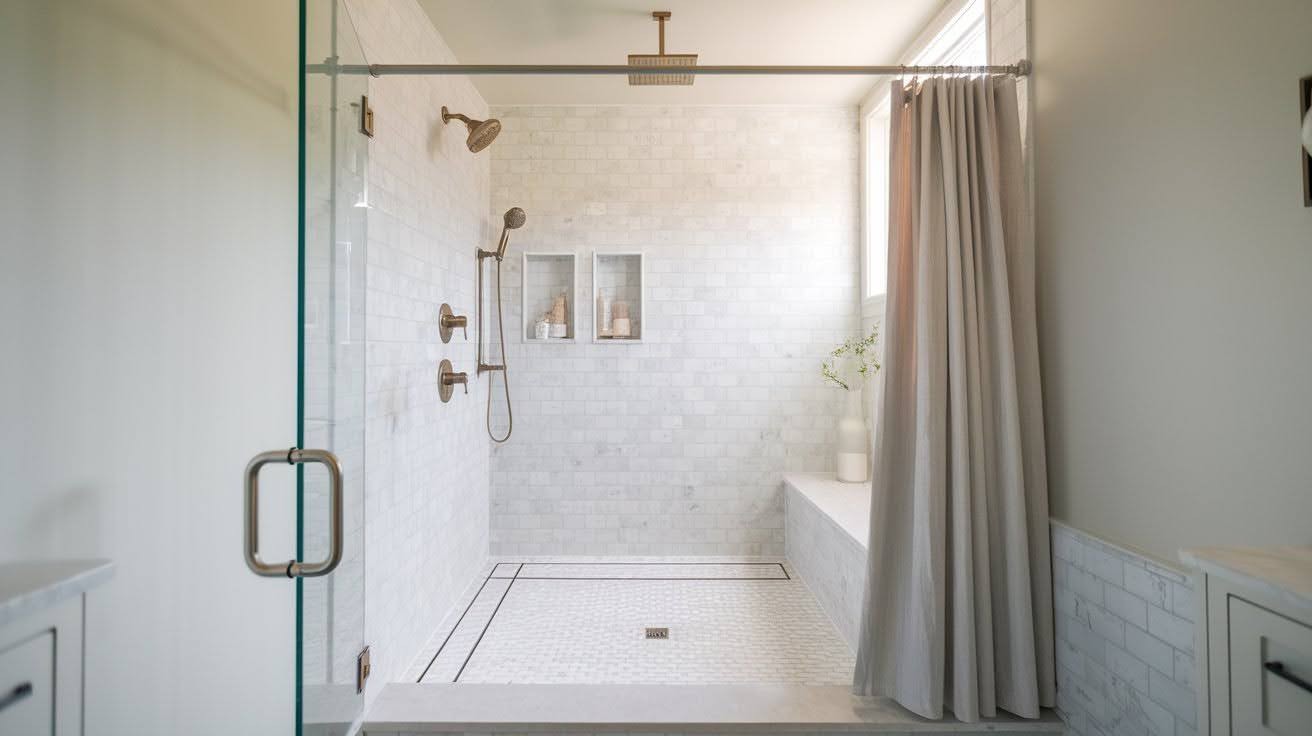
I always tell my clients that the liner is your first line of defense against water damage. Look for liners made from PEVA or vinyl with antimicrobial properties – these materials resist mold and mildew far better than basic plastic options.
I’ve seen too many bathrooms suffer from cheap liners that failed within months.
For the outer curtain, think of it as your bathroom’s personality piece. Cotton blends work beautifully in traditional spaces, while polyester offers durability for busy family bathrooms. Consider your existing fixtures, wall colors, and overall vibe when making your choice.
Step 2 – Choose the Best Rod for Your Space
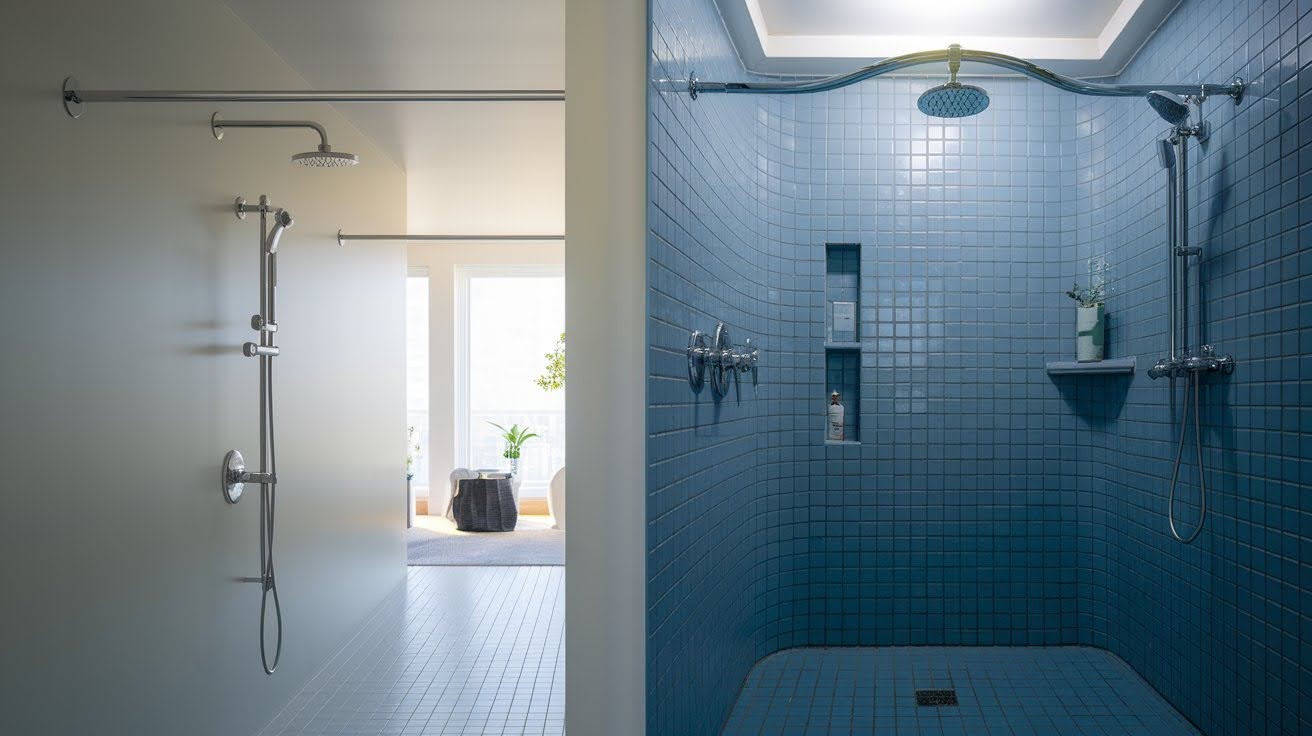
Straight rods work well in most situations, but I recommend curved rods for smaller bathrooms – they create extra space inside the shower while keeping water contained. The curve also prevents the curtain from clinging to you while showering.
Wall-mounted rods provide the most stability and can handle heavier curtain materials. Tension rods offer convenience for renters, but make sure your walls can support the weight and daily use.
Step 3 – Install for Maximum Water Containment
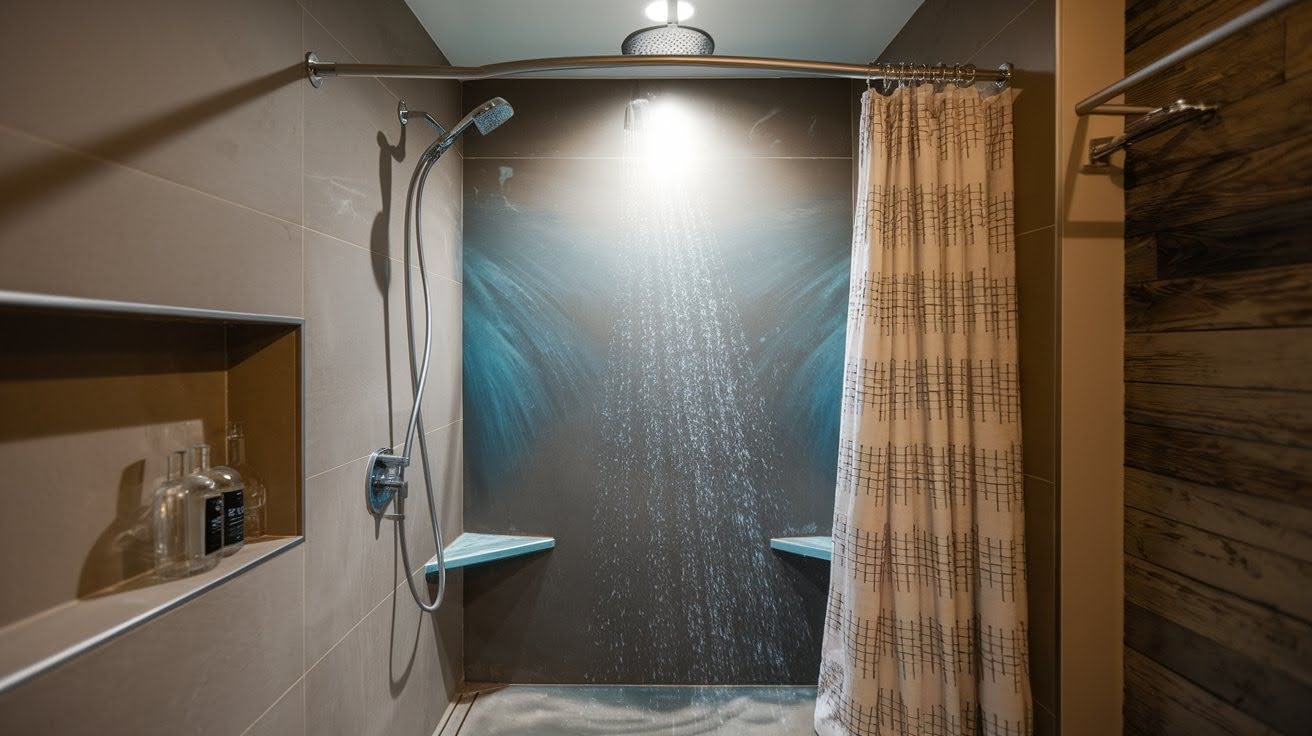
Height matters more than most people realize. I position rods 75-78 inches from the floor, allowing the curtain to hang just above the tub edge or shower pan. This prevents water from escaping underneath while avoiding contact with wet surfaces.
Ensure your curtain extends at least 6 inches beyond each end of the shower opening. This overlap is crucial for keeping water where it belongs.
Step 4 – Add Style with Coordinated Hardware
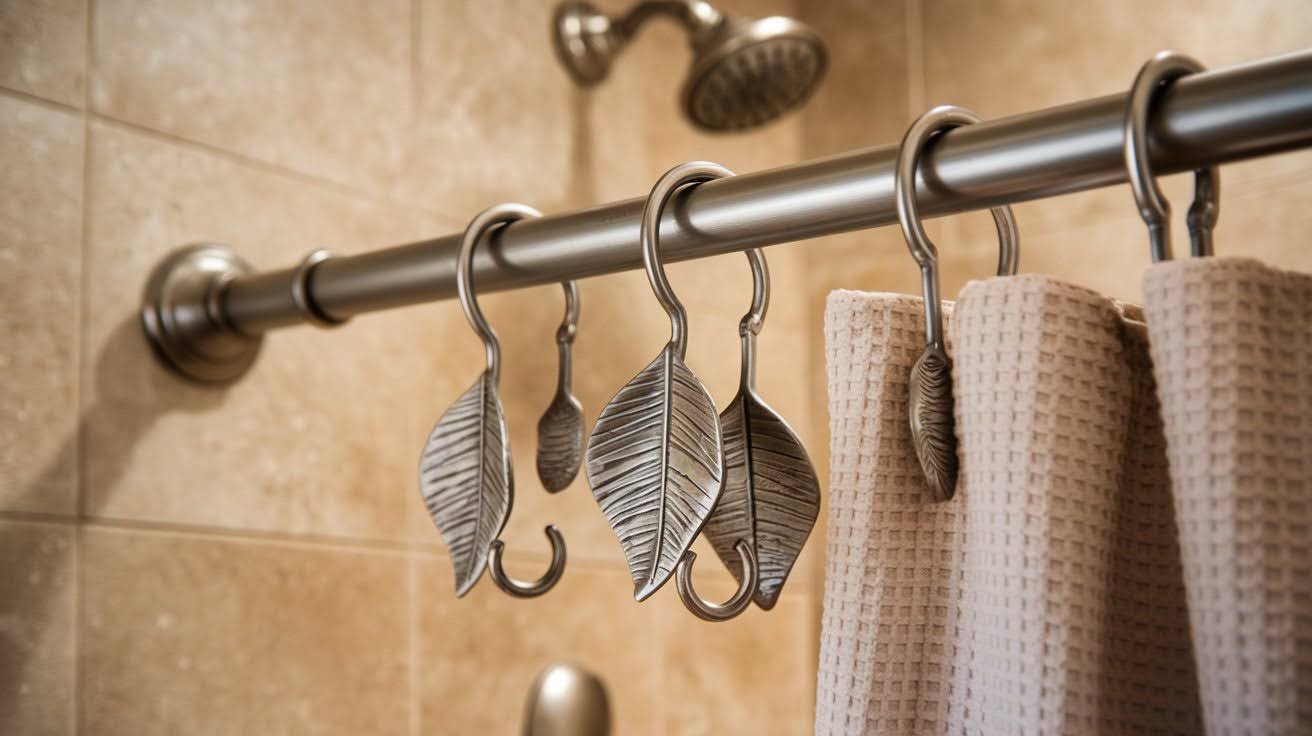
Your hooks and rings should complement your bathroom’s existing hardware. Brushed nickel works with most color schemes, while oil-rubbed bronze adds warmth to traditional spaces. I prefer metal rings over plastic; they slide more smoothly and last longer.
Consider decorative hooks if your curtain has grommets, or choose rings with clips for rod pocket styles.
Step 5 – Maintain for Long-Term Use
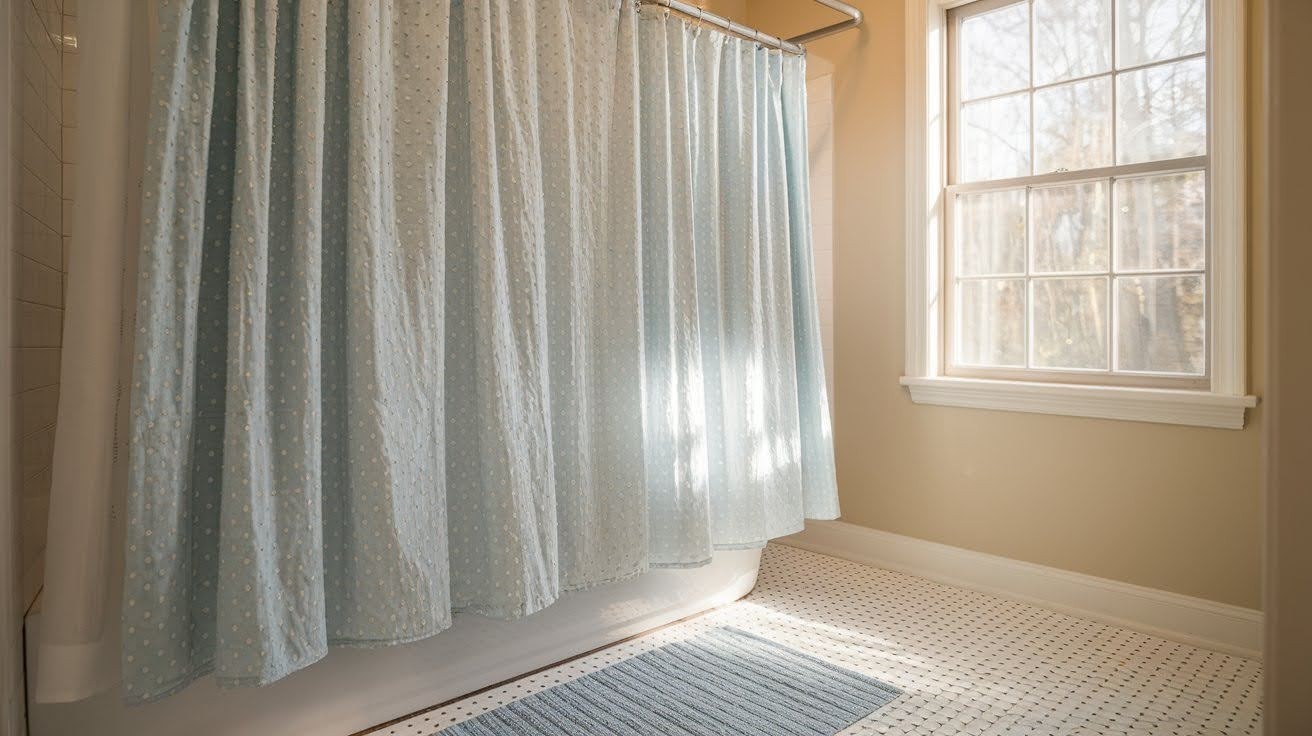
Machine-wash fabric curtains monthly using mild detergent and hang them back up while damp to prevent wrinkles. Clean liners every few weeks with a bleach solution or replace them every 6-8 months, depending on use.
Watch for signs of wear like tears, permanent stains, or persistent odors-these indicate it’s time for replacement.
Step 6 – Lift Comfort and Usability
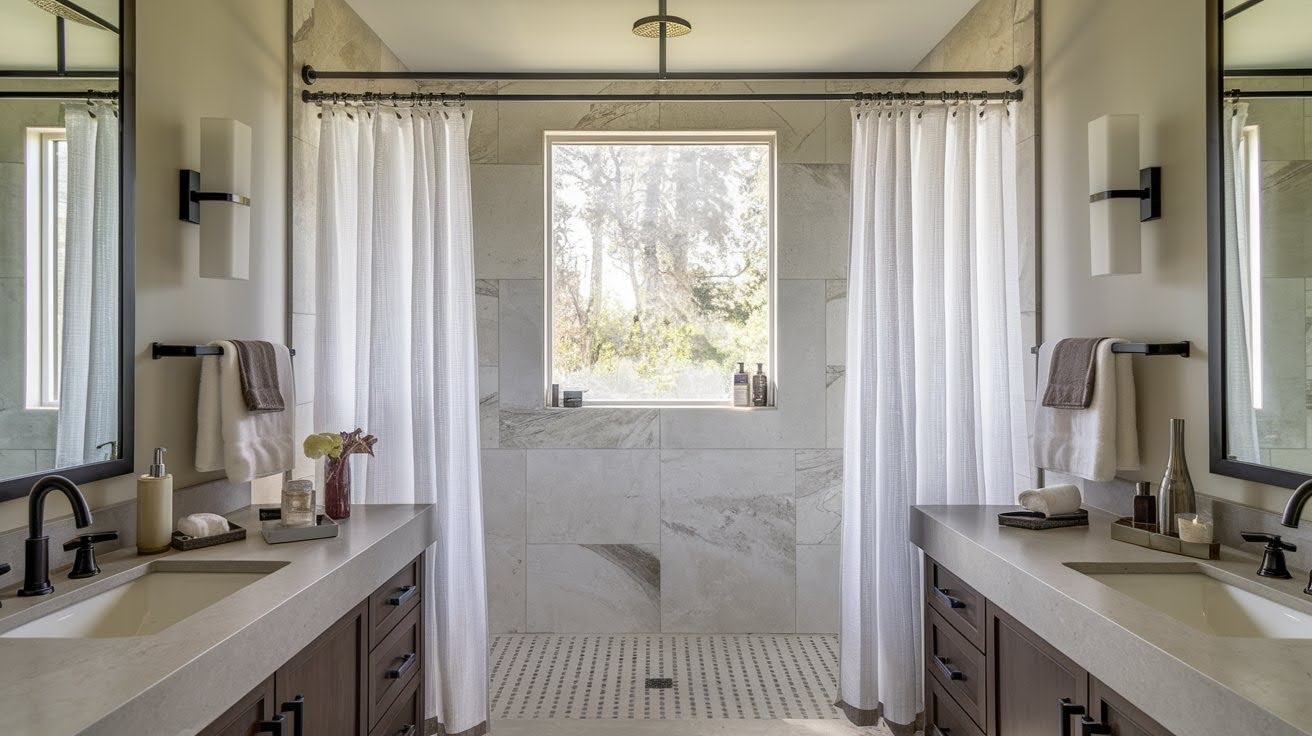
Double rod systems let you hang both liner and curtain independently, making maintenance easier. Some of my clients love magnetic closure systems that keep curtains sealed during showers, while others prefer weighted hems that hang straight and reduce billowing.
Consider your daily routine when choosing features, busy families benefit from quick-dry materials and easy-clean options.
Curtain vs. Glass Door – Which is Right for You?
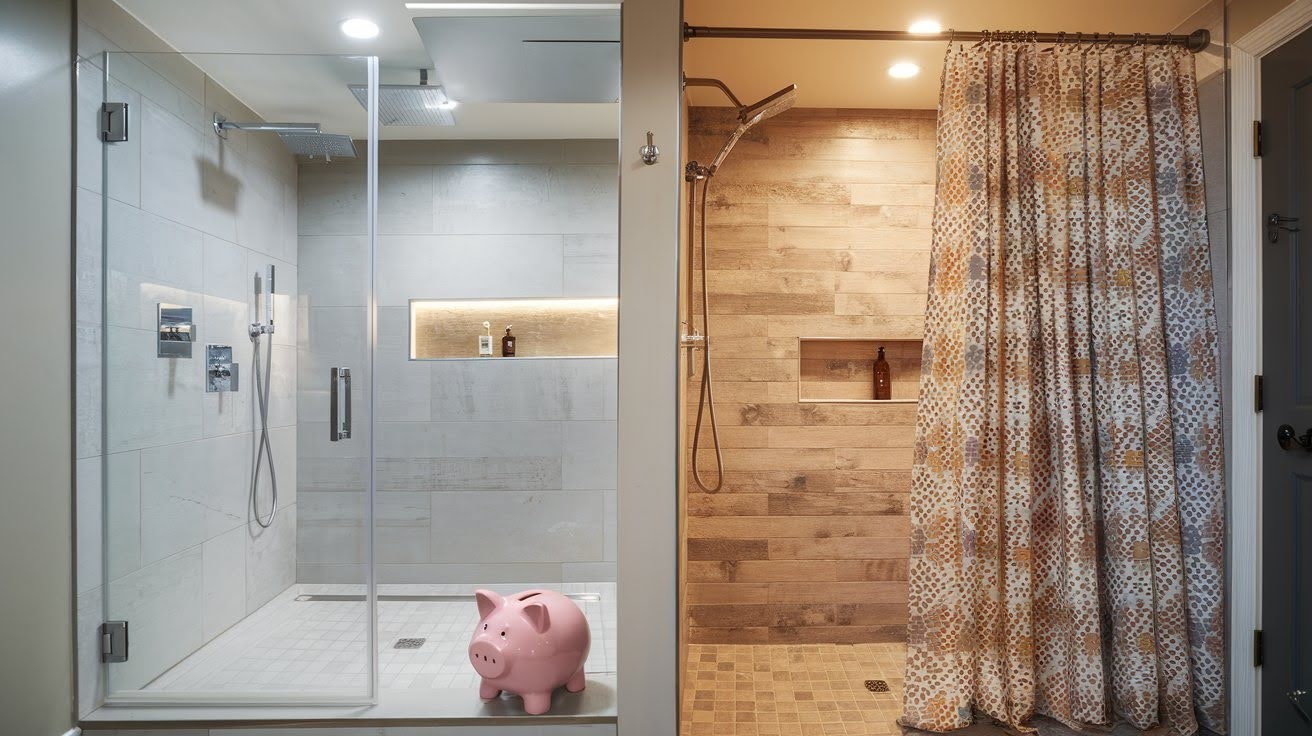
This question comes up in almost every consultation I do, and the answer really depends on your priorities and lifestyle.
Cost-wise, it’s no contest. Glass doors run $300-$800 plus installation, while a complete curtain setup costs $30-$150. I’ve helped clients achieve great results for under $100.
For privacy, curtains are the clear winner. Even frosted glass reveals silhouettes, but curtains provide complete coverage – something families with shared bathrooms appreciate.
Maintenance is where things get interesting. Glass doors need daily squeegee work and regular deep cleaning to prevent soap scum buildup. Curtains just need occasional washing and replacement when worn out.
From my experience, busy families typically choose curtains for their practicality and low cost, while clients wanting a sleek, spa-like look often go with glass. Both work well, it’s just about matching the solution to your needs and budget.
Final Tips for a Stylish Walk-In Shower with a Curtain
Over the years, I’ve learned that small details make the biggest difference between basic and professionally designed curtain setups.
Here are my go-to strategies:
- Layer for depth: Use a decorative outer curtain with a quality liner underneath. I often pair linen outer curtains with clear liners for that spa-like feel my clients love.
- Add texture for sophistication: Waffle weave, subtle stripes, or simple geometric patterns instantly upgrade your space. Plain white textured curtains often look more expensive than busy printed ones.
- Consider your lighting: Position lights to avoid harsh shadows on the curtain. Soft, warm lighting creates a relaxing atmosphere and makes any curtain choice appear more luxurious.
- Treat it as décor: Give your curtain the same attention you’d give paint colors or fixtures. When you approach it as a design element rather than just a functional necessity, the results speak for themselves.
Conclusion
After helping hundreds of homeowners create their ideal bathrooms, I can confidently say that walk-in showers with curtains offer an unbeatable combination of affordability, flexibility, and style.
The projects that bring me the most satisfaction are often the ones where clients achieve their vision without breaking the bank.
What I love most about curtain installations is watching clients realize how much creative freedom they have. You’re not locked into one look for decades-you can refresh your space whenever you want.
From my experience, the most successful bathroom renovations are those that balance practical needs with personal style.
Don’t let budget constraints hold you back from creating the bathroom you want. With the right approach and quality materials, curtains can deliver both function and beauty. Your perfect shower solution is more achievable than you might think.
Frequently Asked Questions
How often should I replace my shower curtain and liner?
I recommend replacing liners every 6-8 months, depending on usage, while quality outer curtains can last 1-2 years with proper care. Watch for signs like persistent odors, tears, or mildew that won’t wash out.
What’s the best height to install a shower curtain rod?
Install your rod 75-78 inches from the floor for optimal water containment. This allows the curtain to hang just above your tub edge or shower pan without touching wet surfaces.
Can I use a regular curtain instead of a shower-specific one?
Regular curtains aren’t designed for moisture and will deteriorate quickly in shower environments. Always use water-resistant materials specifically made for bathroom use to prevent mold and extend lifespan.
What type of rod works best for walk-in showers?
Curved rods are my top choice for most installations because they create extra space inside the shower while keeping water contained. Wall-mounted options provide the most stability for daily use.
How do I prevent my shower curtain from blowing inward while showering?
Weighted hems or magnetic closures work well to keep curtains in place. You can also choose a curved rod or ensure proper ventilation to reduce air pressure differences that cause billowing.

